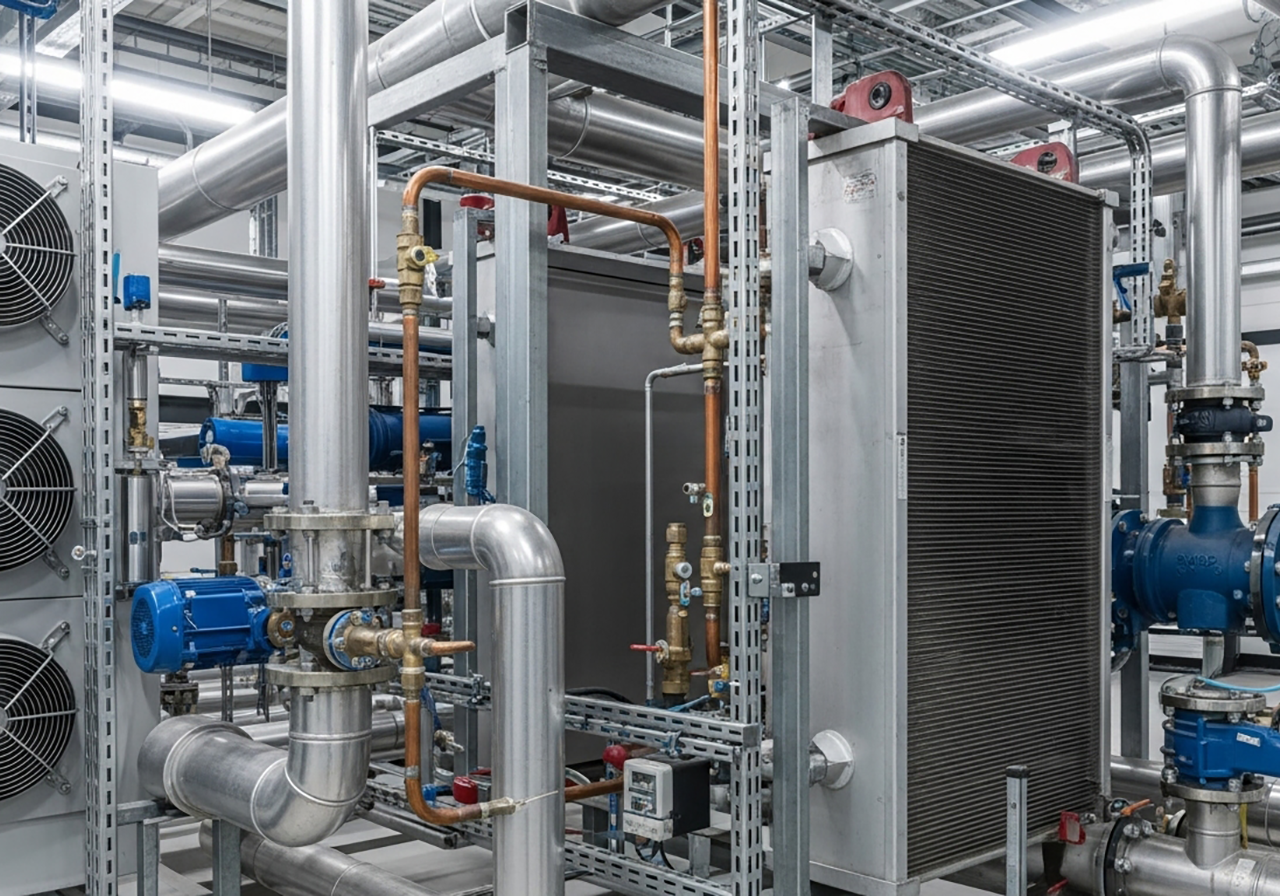Refrigeration & HVAC Gaskets / Plates
Get the Right Gasket, Right Plate, Right Now – Your Trusted Source for Heat Exchanger Parts.
Refrigeration & HVAC Heat Exchanger Solutions
Overview & Key Applications
Plate-and-frame heat exchangers (PHEs) are an essential solution for modern HVAC and refrigeration systems, used everywhere from high-rise building chillers to industrial cold storage and district energy plants. Common applications include:
PHEs are chosen for their high thermal efficiency, space-saving design, and ease of maintenance. They help contractors reduce downtime and make it easier to service critical HVAC and refrigeration infrastructure.
Plate Materials & Hygienic Design
In HVAC and refrigeration settings, most PHE plates are made from 316 stainless steel for its excellent corrosion resistance in treated water and most glycols. In harsher environments—such as with seawater or aggressive brines—titanium plates may be specified. Plate packs are engineered for efficient heat transfer while minimizing fouling and allowing for easy cleaning.
While strict hygienic standards are less of a concern than in food or pharma, a smooth, crevice-free plate surface still helps prevent scale and biofilm buildup, extending equipment life and maintaining system efficiency.
Gasket Material Guide
Selecting the right gasket material is crucial for reliable operation and long gasket life:
EPDM (Ethylene Propylene Diene Monomer):
NBR (Nitrile Butadiene Rubber):
Viton (FKM):
HNBR:
For best results, always check the manufacturer’s chemical compatibility guides—especially when using glycol blends, inhibitors, or specialty cleaning chemicals.
Top Manufacturers & Models
When it comes to spares availability and service support, these brands lead the way in HVAC and refrigeration plate heat exchangers:
Alfa Laval:
Tranter:
Kelvion (GEA):
Danfoss (SONDEX):
Xylem (Bell & Gossett / Standard Xchange):
FUNKE, API Schmidt-Bretten, Barriquand:
These manufacturers deliver proven reliability, fast spare part availability, and solid technical support—critical for mechanical contractors needing quick turnarounds and minimal downtime on site.

Make a call
Need help quick? Give us a call!
Contact form
Need a quote? Complete our online form!
